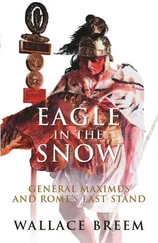There was a long silence, and then a deep voice cried, “Mithras!” and the cry echoed back across the hill. And after that the silence went on for ever.
DIS MANIBUS
P GAIO MAXIMO FILIO CLAUDII ARELATIS
PRAEFECTUS I COH TUNG LEG XX VAL VIC
DUX MOGUNTIACENSIS COMES GALLIARUM
ANN LVII CCCCX ET Q VERONIO PRAEFECTUS
ALAE PETRIAE PRAEFECTUS II COH ASTUR
MAGISTER EQUITUM GERMANIAE SUPER ANN
LVI CECIDIT BELLO RHENO CCCCVII
SATURNINUS AMICUS FECIT
LIST OF PRINCIPAL CHARACTERS
Those marked with an asterisk are known to history.
Aelia
wife to P. G. Maximus
Agilio
post commander. Thirtieth Milestone.
*Alaric
Prince of the Visigoths
Aquila
Chief Centurion, 20th Legion
Artorius
Curator of Augusta Treverorum
Barbatio
Praefectus of auxiliaries at Moguntiacum
*Chariobaudes
C. in C. the Army of Gaul.
*Constans
son to Constantinus
*Constantinus
Chief of Staff at Eburacum; later self-styled emperor
Didius
squadron commander, 20th Legion
Fabianus
son to Saturninus
Flavius
garrison commander at Augusta Treverorum
Fredbal
a prisoner of war
Fredegar
sword-brother to Marcomir
*Fullofaudes
C. in C. the Army of Britain
Gaius
2 i/c the Tungrian cohort
Gallus
tribune of the Rhenus fleet
*Goar
Prince of the Alans; cousin to Respendial
*Godigisel
King of the Siling Vandals
*Gunderic
King of the Asding Vandals
*Guntiarus
King of the Burgundians
Hermeric
King of the Marcomanni
*Honorius
Emperor of Rome
Julian
cousin to P. G. Maximus
Lucillius
senior tribune, 20th Legion
Marcomir
Prince of the Franks
Marius
a tribune of the 20th Legion
*Mauritius
Bishop of Augusta Treverorum
*Maximus (Magnus)
Chief of Staff to Theodosius in Britain; later self-styled emperor
Maximus (Paulinus Gaius)
a Roman soldier
Optatus (Julius)
Quartermaster, 20th Legion
*Placidia (Galla)
sister to Honorius
*Rando
King of the Alemanni
*Respendial
King of the Alans
*Saturninus
Chief Centurion, Tungrian cohort
Scudilio
commander of auxiliaries at Bingium
Septimus (Julianus)
retired Curator of Augusta Treverorum
Severus (Marcus)
a tribune of the 20th Legion
*Stilicho
Military Master of the Western Empire
Sunno
son to Rando; later King of the Alemanni
Talien
King of the Quadi
Veronius (Quintus)
a cavalry officer
Vitalius
adjutant of the Tungrian cohort
HISTORICAL EVENTS
353
Martinus, Vicarius of Britain, “killed” by Constantine II.
364
Valentinian I, Emperor of the West. Picts, Scots, Attacotti and Saxons raiding Britain.
367
Picts, Scots, Attacotti and Saxons, in conspiracy, overwhelm the Wall and over-run Britain.
Fullofaudes, Duke of Britain, and Nectaridus, Count of the Saxon Shore, slain.
368
Count Theodosius, sent by Valentinian I, reconquers Britain and restores the Wall.
375
Death of Valentinian I.
Valentinian II and Gratian, Emperors of the West.
378
Battle of Adrianople.
379
Reign of Theodosius I.
383
Magnus Maximus, military commander, acclaimed emperor in Britain; conquers Spain and Gaul from Gratian who is killed.
388
Magnus Maximus defeated by Theodosius I, and executed.
395
Death of Theodosius I.
Honorius, aged 11, Emperor of the West: Stilicho, the Vandal, appointed his guardian.
?
Stilicho improves the defences of Britain and withdraws some troops.
403
Alaric, the Goth, invades Italy.
406
Stilicho defeats Radagaisus who invades Italy.
Constantinus proclaimed emperor in Britain.
Coalition of Marcomanni, Quadi, Asding and Siling Vandals, cross the Rhine at Mainz and over-run Gaul.
407
Alemanni sack Worms and annexe the right bank of the Rhine.
Constantinus, with his son Constans, crosses to Gaul with the last remaining troops in Britain, and establishes himself at Arles.
408
Stilicho murdered at instigation of Honorius.
410
Rome sacked by Alaric: Honorius bids the Britons look to themselves.
411
Constans and Constantinus killed by Honorius’ troops.
PRINCIPAL PLACE NAMES
Anderida
Aquae Mattiacae
Arelate
Augusta Treverorum
Bingium
Belgica
Borbetomagus
Borcovicum
Boudobrigo
Caledonia
Colonia
Confluentes
Corinium
Corstopitum
Danubius
Deva
Dubris
Eburacum
Germania Superior
Gesoriacum
Hibernia
Hispania
Illyricum
Isca Silurium
Lemanis
Londinium
Lugdunum
Mauretania
Mediolanum
Moenus
Moguntiacum
Mona
Mosella
Nava
Padus
Pevensey
Wiesbaden (Germany)
Arles (France)
Trier (Germany)
Bingen (Germany)
Belgium, N. France and a part of W. Germany Worms (Germany)
Housesteads
Boppard (Germany)
Highland Scotland
Cologne (Germany)
Koblenz (Germany)
Cirencester
Corbridge
River Danube
Chester
Dover
York
Upper Germany: a province on the west bank of the Rhine
Boulogne (France)
Ireland
Spain
Illyria (Yugoslavia)
Caerleon
Lympne
London
Lyons (France)
North Africa, from Morocco to Algeria
Milan (Italy)
River Main (Germany)
Mainz (Germany)
Anglesey
River Mosel (Germany)
River Nahe (Germany)
River Po (Italy)
Pannonia
Petriana
Ratae
Remi
Rhenus
Rutupiae
Richborough
Salisio
Segontium
Taunus
Ticinium
Vetera
Vindolanda
Vindonissa
Viroconium
Hungary and N.E. Yugoslavia
Stanwix
Leicester
Rheims (France)
River Rhine (Germany)
Salzig (Germany)
Caernarvon
range of hills and forests east of the Rhine
Pavia (Italy)
near Xanten (Germany)
Chesterholm
Windisch (Switzerland)
Wroxeter
GLOSSARY OF TERMS
ALA—a cavalry regiment, orginally 500 to 1,000 men, divided into 16 or 24 squadrons respectively.
AQUILIFER—the officer carrying the Eagle, the sacred insignia of the legion.
AUXILIARIES—originally provincial troops formed into cavalry regiments (alae) or infantry regiments (cohorts) 500 to 1,000 strong; later troops of the frontier army.
BALLISTA—a type of artillery for throwing heavy missiles. These varied in size and performance. The smaller ones were often called scorpions or onagers.
CARROBALLISTA—a type of mobile field artillery which fired 9 to 12 inch bolts with iron heads.
CENTURION—usually the officer commanding a century; a rank for which there is no modern equivalent.
CENTURY—the smallest unit (100 men) of the legion which originally contained 60 centuries.
COHORT—originally a tactical unit of the legion comprising six centuries; also an auxiliary regiment.
COMES GALLIARUM—Comes (Count) was an honorary title often conferred upon senior military and civil officers. In some instances the title carried special duties.
COUNT OF THE SAXON SHORE—(Comes Littoris Saxonici) the general commanding the defences of the south-east coast of Britain.
CURATOR—a civilian official who fulfilled the functions of a mayor.
CURIAL CLASS—the provincial class from which municipal and local government officers were selected.
DECURION—a junior officer in an auxiliary cavalry unit commanding a troop.
Читать дальше












